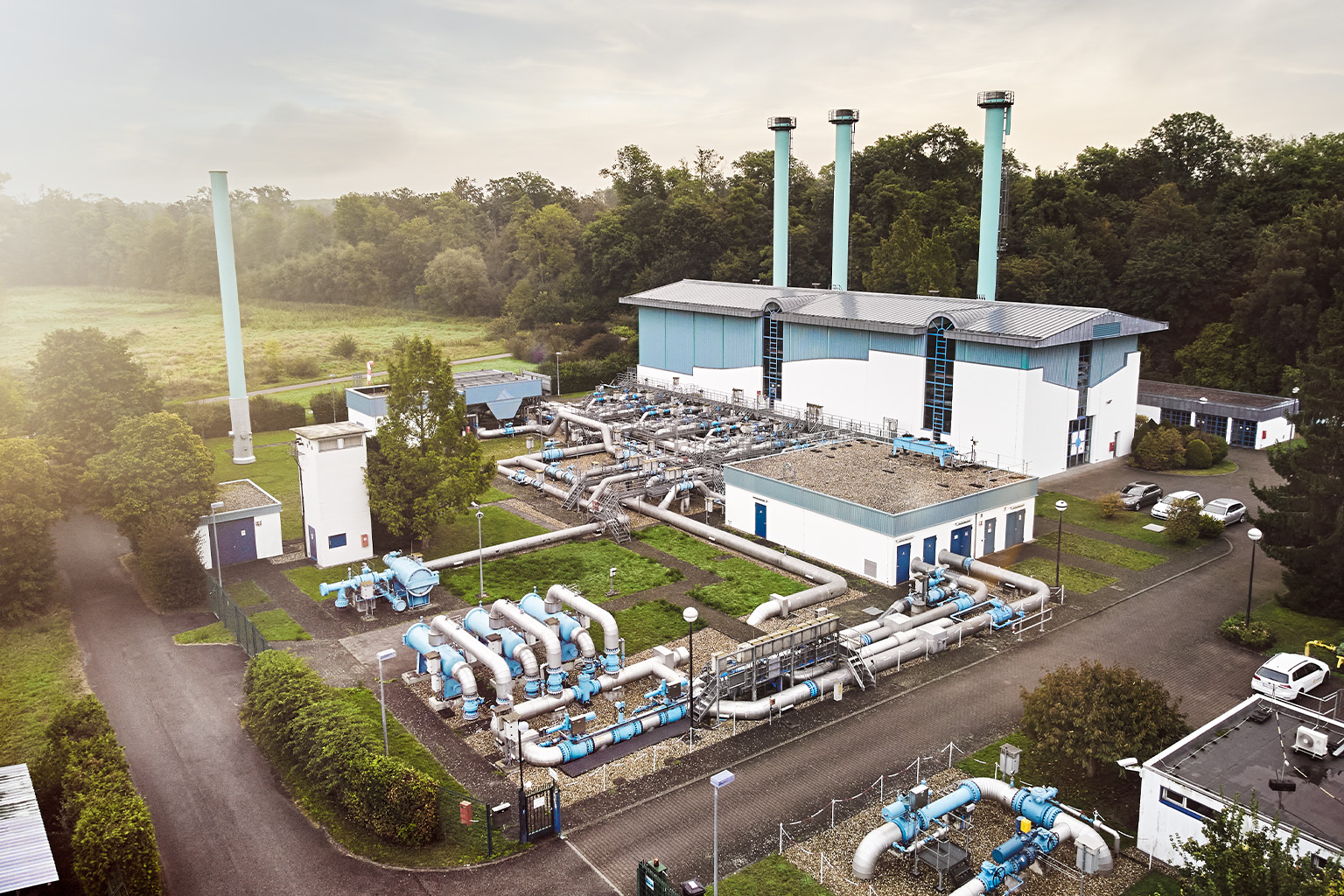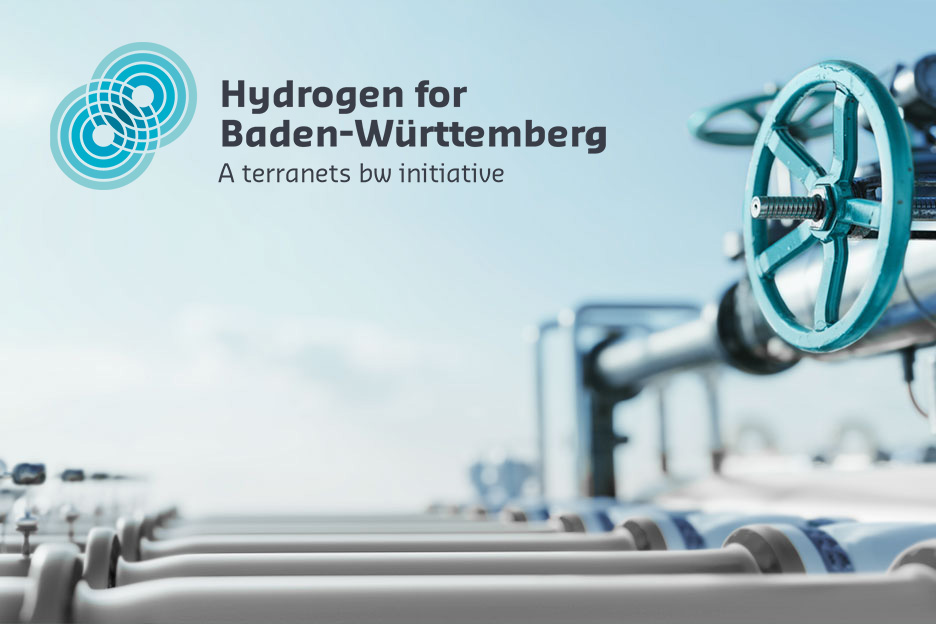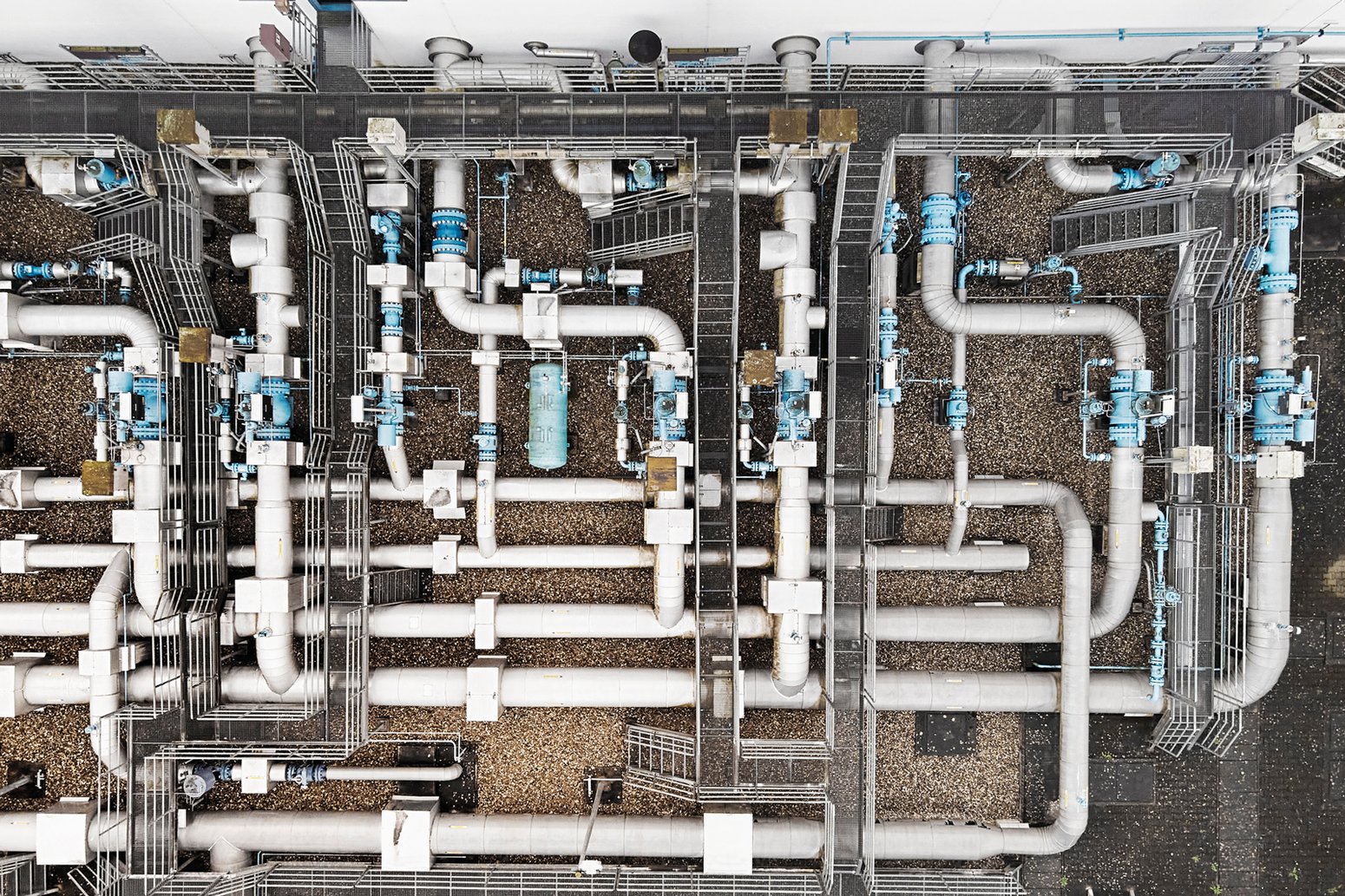Current Gas Supply Status Report of terranets bw
terranets bw publishes a report every fortnight during the winter months. In addition to selected information from the BNetzA's report, terranets bw provides information on gas flows in its grid area and the filling level of the Sandhausen storage facility. Previous reports are available in our archive.
Natural gas consumption
On a monthly basis, terranets bw evaluates the natural gas consumption in its transmission system.
- In the Baden-Württemberg grid area, 19% less gas was consumed in March than in 2021 in warmer temperatures. In the Hesse grid area, 24% less gas was consumed in warmer temperatures than in 2021.
- This means that the savings target of 20% set by the BNetzA was only achieved in Hesse.
Current status reports of the Federal Network Agency
The Federal Network Agency publishes a current situation report daily. This report includes information about the gas flows from Russia and the filling levels of the German storage facilities. As a transmission system operator, terranets bw is a member of the national gas crisis team. terranets bw provides information on the consumption structure for its supply area for this situation report.
Learn more about the current situation
The market area monitor of the Trading Hub Europe shows all gas shipping data in and out of the market area.
An overview of European gas flows are provided by the ENTSOG GASFLOW DASHBOARD.
The GIE transparency platform shows an overview of European LNG imports.
GIE ALSI (Aggregated LNG Storage Inventory)
The levels of all European gas storage facilities are published on the GIE transparency platform.
GIE AGSI (Aggregated Gas Storage Inventory)
The DVGW publishes daily updated gas storage levels for Germany as well as a weather-depended consumption forecast and storage range.
The security of supply in the entire terranets bw grid area was guaranteed at all times.
In principle, an efficient infrastructure must always be in place to ensure security of supply. As part of its responsibility for gas transportation, terranets bw therefore continues to make its contribution to the future energy supply in close coordination with all parties involved. A reduction in consumption remains important.
Find out more:
To the article Review of winter 2024/2025
Review of winter 2024/2025 by the German transmission system operators
In their winter review, German transmission system operators (TSOs) take a look back at the past few months and take stock.
The key findings are:
- Winter 2024/2025 was again characterized by mild temperatures, albeit with several short periods of cold weather. Overall, sales on the heating market and industrial gas consumption rose again, but remained well below pre-crisis levels.
- Gas supplies remained stable thanks to additional LNG feed-ins and well-filled storage facilities, even during periods of high demand in winter. Transmission system operators made a significant contribution to security of supply by quickly connecting LNG terminals to the grid through necessary grid expansion measures.
- Throughout the winter, the available withdrawal capacity from natural gas storage facilities remained sufficient, and storage levels remained above the legally required minimum values at all times.
- The previous statutory storage filling requirements led to market distortions in 2025, for example through unusual price developments. For the coming winter, the FNBs are pointing out the need for further action and presenting concrete proposals that provide for greater involvement and responsibility for market participants and minimize government intervention in the market.
With the newly created regulations on minimum fill levels and the security platform, important emergency processes were already established in 2022 that contribute to ensuring the energy supply and are continuously being optimized.
As part of their responsibility for transport, the TSOs continue to work closely with all stakeholders to contribute to a secure energy supply.
More information:
Winter review by German transmission system operatorsum
Germany's Emergency Plan for Gas
The Emergency Plan for Gas regulates how to handle an impending or occurring gas supply crisis taking into account various laws (e.g. SoS Regulation for natural gas, Energy Industry Act).
The Emergency Plan for Gas identifies tasks and roles as well as the crisis coordination and communication of natural gas supply companies, commercial gas customers and authorities for each crisis level.
Ausrufen der Frühwarnstufe
Das Bundesministerium für Wirtschaft und Energie (BMWE) hat am 1. Juli 2025 die sogenannte Alarmstufe, auf die erste Stufe, die sogenannte Frühwarnstufe, zurückgenommen.
Pressemitteilung des BMWE (01.07.2025)
Zuvor hatte das Bundesministerium für Wirtschaft und Klimaschutz (BMWK) am 23. Juni 2022 die Alarmstufe des Notfallplans Gas in Deutschland ausgerufen.
Pressemitteilung und FAQs des BMWK (23.06.2022)
Derzeit sind alle Netze ausgeglichen und es bestehen keine Transportprobleme.
terranets bw steht weiterhin in engem Austausch mit Behörden, Fernleitungsnetzbetreibern, Verbänden und Kunden, insbesondere Verteilnetzbetreibern, im Versorgungsgebiet.
Fundamentally, grid operators are obliged to ensure the operation of safe and reliable grids within the scope of their system responsibility according to the Energy Industry Act (EnWG). Based on sections 15, 16 and 16a of the Energy Industry Act (EnWG), transmission system operators and distribution system operators play a significant role in securing the supply of gas. In the event of an acute shortage situation and a triggering of the emergency level according to the Emergency Plan for Gas, sovereign emergency rights are granted to the federal load dispatching centre.
For implementing section 16 (2) of the Energy Industry Act (EnWG), the legislator does not stipulate any detailed criteria for grid operators for deciding which measures are to be taken or to what extent or with which parties in order to eliminate the hazardous or disruptive situation as quickly and efficiently as possible.
The grid operators have some room for assessing their actions within the customer groups of both non-protected and protected customers. The BDEW has drawn up application guidelines for grid operators for implementing section 16 (2) of the Energy Industry Act (EnWG) in the time of tension leading up to the occurrence of an Energy Security Act (EnSiG) case. This application support is published in the member section of the BDEW. To the application support in the Plus-Section (BDEW)
Winter 2024/2025
- Status report terranets bw (KW45/2024)
- Status report terranets bw (KW47/2024)
- Status report terranets bw (KW49/2024)
- Status report terranets bw (KW51/2024)
- Status report terranets bw (KW01/2025)
- Status report terranets bw (KW03/2025)
- Status report terranets bw (KW05/2025)
- Status report terranets bw (KW07/2025)
- Status report terranets bw (KW09/2025)
- Status report terranets bw (KW11/2025)
- Status report terranets bw (KW13/2025)
- Status report terranets bw (KW15/2025)
Winter 2023/2024
- Status report terranets bw (KW42/2023)
- Status report terranets bw (KW44/2023)
- Status report terranets bw (KW46/2023)
- Status report terranets bw (KW48/2023)
- Status report terranets bw (KW50/2023)
- Status report terranets bw (KW02/2024)
- Status report terranets bw (KW04/2024)
- Status report terranets bw (KW06/2024)
- Status report terranets bw (KW08/2024)
- Status report terranets bw (KW10/2024)
- Status report terranets bw (KW12/2024)
Winter 2022/2023
- Status report terranets bw (KW40/2022)
- Status report terranets bw (KW41/2022)
- Status report terranets bw (KW42/2022)
- Status report terranets bw (KW43/2022)
- Status report terranets bw (KW44/2022)
- Status report terranets bw (KW45/2022)
- Status report terranets bw (KW46/2022)
- Status report terranets bw (KW47/2022)
- Status report terranets bw (KW48/2022)
- Status report terranets bw (KW49/2022)
- Status report terranets bw (KW50/2022)
- Status report terranets bw (KW51/2022)
- Status report terranets bw (KW01/2023)
- Status report terranets bw (KW02/2023)
- Status report terranets bw (KW03/2023)
- Status report terranets bw (KW04/2023)
- Status report terranets bw (KW05/2023)
- Status report terranets bw (KW06/2023)
- Status report terranets bw (KW07/2023)
- Status report terranets bw (KW08/2023)
- Status report terranets bw (KW09/2023)
- Status report terranets bw (KW10/2023)
- Status report terranets bw (KW11/2023)
How does terranets bw calculate the natural gas consumption in its network area Baden-Württemberg and Hesse?
How does terranets bw calculate the natural gas consumption in its network area Baden-Württemberg and Hesse?
To calculate the natural gas consumption in the network areas of terranets bw, volumes are recorded that are transmitted from the network area to directly connected distribution system operators in Germany and neighbouring countries as well as to industrial end-consumers per month. Volumes injected into or withdrawn from storage facilities in the network areas are not taken into consideration in this natural gas consumption.
terranets bw publishes the natural gas consumption for its network areas Baden-Württemberg and Hesse in its gas supply status report on a monthly basis.
What is special about the gas storage facility in Sandhausen?
What is special about the gas storage facility in Sandhausen?
The Sandhausen storage facility is the only underground storage facility in Germany that exists for grid purposes. This means it is exclusively used for stabilising the network and for securing supply. This occurs predominantly when consumption fluctuates in the gas transmission system, for example when offtake is high due to very cold temperatures. The Sandhausen storage facility has a total working gas capacity of 30 million m3, meaning around 150,000 households in Baden-Württemberg can be supplied with natural gas for one month.
The storage level of the Sandhausen storage facility is published in the terranets bw status report on a weekly basis.
What is the ratio of protected and non-protected customers in the network area of terranets bw?
What is the ratio of protected and non-protected customers in the network area of terranets bw?
In accordance with Section 53a of the Energy Act (EnWG), protected customers include household customers along with additional end-consumers in the natural gas distribution system, basic social services (such as, for example, hospitals, preventive care and rehabilitation facilities and inpatient care facilities, fire services and police) as well as district heating plants. In the case of a gas shortage, the gas supply to protected customers can only be reduced if non-protected customers were previously disconnected and additional measures are nevertheless required. Non-protected customers include, for example, industrial companies.
In September 2022, the Federal Network Agency also published a definition of the essential needs of protected and non-protected customers in a national gas shortage at Current supply status > Background information veröffentlicht.Network area of terranets bw
In the network area of terranets bw – in the networks of the 63 directly connected distribution system operators – approximately 25 % of the customers are not protected. This means around 75 % are protected customers. 22 industrial end-consumers are connected to the network.
Network coupling points (German: NKP) refer to connections between the terranets bw network and distribution systems via which households, trade and industry are supplied. Network connection points (German: NCP) refer to direct connections between the terranets bw network and the directly connected industrial end-consumers.
Status: 01.01.2022 NKP NAP Share of non-protected customer 23% 92%* Share of system-relevant power stations 4% 0% Share of protected customers
73% 8% * Share of protected customers related to industrial end-consumers, e.g. heating supply of a hospital via a combined heat and power plant (CHP)

![[Translate to English:] Unser Telekommunikationsnetz](/fileadmin/_processed_/4/8/csm_Telekommunikation_Kabel_Unschaerfe_blau_gelb_terranets-bw_e68fc06931.jpg)

![[Translate to English:] terranets bw / Für Kunden / Telekommunikation](/fileadmin/_processed_/6/7/csm_231222_Mitarbeitender_am_Schaltschrank_6_kl_0cca01e205.jpg)
![[Translate to English:] Kundenportal ConnectCapacity](/fileadmin/_processed_/c/3/csm_231222_Mitarbeitende_der_IT_Computer_8_kl_3266995988.jpg)

![[Translate to English:] terranets bw Unternehmen Visionen](/fileadmin/user_upload/Content/Unternehmen/Visionen/terranets_bw_Mitarbeitende_Brainstorming_1.jpg)
![[Translate to English:] terranets bw: Wasserstoff für Baden-Württemberg](/fileadmin/_processed_/2/3/csm_Wasserstoff_Inititative_Logo_Energiezukunft_8904d74570.jpg)
![[Translate to English:] terranets bw: Sehen Sie sich unsere Stellenangebote an!](/fileadmin/_processed_/c/0/csm_240507_Mitarbeitende_im_Gespraech_3_bcf21346f8.jpg)
![[Translate to English:] Arbeiten bei der terranets bw](/fileadmin/user_upload/Content/Karriere/terranets_bw_Karriere_Arbeiten-bei-Terranets_3zu2.jpg)
![[Translate to English:] Die Standort der terranets bw](/fileadmin/user_upload/Content/Karriere/terranets_bw_Was-wir-tun_Scharenstetten_3zu2.jpg)
![[Translate to English:] Studium, Ausbildung oder ein Praktikum bei der terranets bw](/fileadmin/_processed_/2/f/csm_TERRANETS_Bild_Fuer-Praktikanten-und-Auszubildende_Fuer-Schuelerinnen_3zu2_360e1e705d.jpg)
![[Translate to English:] terranets bw: Netzausbauprojekte](/fileadmin/_processed_/4/0/csm_Absenken_Rohrstrang__3__67f60716af.jpg)

![[Translate to English:] terranets bw Mediathek](/fileadmin/_processed_/2/2/csm_terranetsbw_Flugtafel_3_c6937e947f.jpg)


